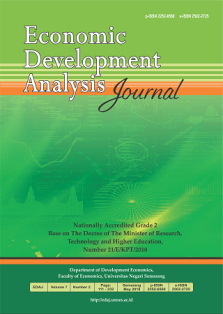The Determinants of Large and Medium Industrial Sectors Productivity Growth in Indonesia
Abstract
The study aims to analyze the determinants of labor productivity growth in the large and medium industrial sub-sectors in Indonesia related to changes in economic structure that lead to the dominant role of the industrial sector in national GDP formation. The data used are combined between cross-section from 62 large and medium industrial sub-sectors, and time series, during 1990-2014, which are divided into 5 sub-periods of research. The data includes value added, number of workers, FDI, and Wages. Data sources are the Central Bureau of Statistics, Bappenas, and the Ministry of Industry of the Republic of Indonesia. The analytical method used is the panel data regression model, using secondary data. The model is analyzed by estimating the Least Square Dummy Variable (LSDV) method. The results of the study show that: (1) Changes in the share of labor as a result of the process of reallocating labor between sub-sectors have a negative effect on labor productivity growth. (2) Determinants of labor productivity growth, in addition to changes in the share of labor: those are investment variables (capital deepening), both short and long-term, and FDI does not affect labor productivity growth, while wages have a significant positive effect.


